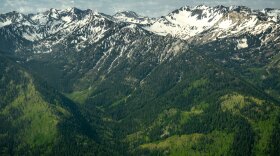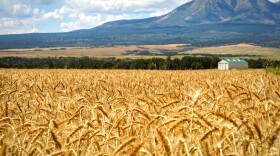-
The Trump administration wants to do away with the Roadless Area Conservation Rule. Established in 2001, it stopped road construction and logging on national forest lands — including four million acres in Utah.
-
Aproximadamente la mitad de los adultos en Estados Unidos dijeron en una encuesta que el costo de los alimentos es una fuente importante de estrés en sus vidas. En Utah, una despensa en North Salt Lake ha visto que la demanda casi se ha duplicado en el último año, y otras en el estado están buscando maneras de reducir gastos.
-
About half of all U.S. adults told a poll that grocery costs are a major stressor in their lives. In Utah, a North Salt Lake pantry has seen demand nearly double in the last year, and others in the state are looking for ways to shave costs.
-
Tamarisk trees are a scourge on riverside ecosystems across southern Utah. Scientists hope their natural enemies, tamarisk beetles, can help local ecosystems fight back.
-
The U.S. Department of Agriculture plans to move thousands of employees out of Washington, D.C., aiming to save money and bring them closer to farmers and ranchers. Around 2,600 workers will relocate to five hubs from North Carolina to Utah.
-
Workers who maintained trails, removed combustible debris from forests and secured funding for wildfire mitigation projects say the loss of these federal positions could impact public safety.
-
Massive federal layoffs are hitting communities across the West, including rural, recreation hotspots like McCall, Idaho. Here's how that town is responding.
-
Farm irrigation uses a lot of water across the West. In one Utah community, however, farmers already grow crops without any irrigation. It might seem like an answer to the state's water woes, but the reality is not so simple.
-
High housing costs are cutting into Utahns’ budgets for necessities like food. The Utah Food Bank has seen higher demand than in recent years as households in the state struggle with food insecurity.
-
From cherries to apricots to pears, Utah has thousands of fruit trees on public and private property. Individuals and community organizations are working to make sure all that food doesn’t go to waste.
-
Even though Utah is home to around 335,000 beef cattle, ranchers haven’t had many local avenues for getting that meat to market. Instead, it gets sent out of state, driving up costs.
-
USDA planting data shows a warming trend in Utah which means “we could potentially plant some new things in our gardens,” said Red Butte Garden horticulturist Crystal Kim.
Play Live Radio
Next Up:
0:00
0:00
Available On Air Stations











